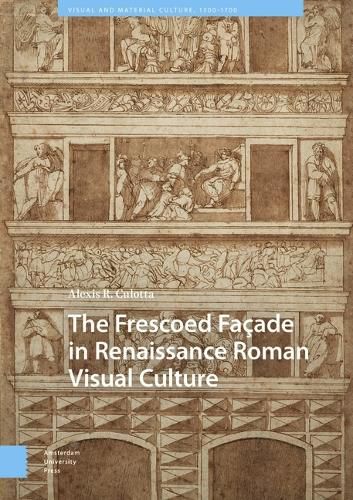Readings Newsletter
Become a Readings Member to make your shopping experience even easier.
Sign in or sign up for free!
You’re not far away from qualifying for FREE standard shipping within Australia
You’ve qualified for FREE standard shipping within Australia
The cart is loading…






This book examines Roman facades decorated with fresco and sgraffito between the fifteenth and sixteenth centuries that once enveloped the central rioni of Rome within a web of symbolic social, political, and familial allegiances that transformed a street-side stroll into a visually engaging experience. Today, many of these faces are lost, and our understanding of what they comprised is frighteningly incomplete. This book offers a refreshed look at this often-forgotten facet of Renaissance visual culture to reignite interest in the tradition before its last remnants disappear. In addition to offering a new compilation of these documented facades, this book also places new emphasis on the making and meaning of these "painted faces" to provide new insights into the place of the decorated facade at the intersections of patron identity and painterly innovation in a city working tirelessly to reinvent itself.
$9.00 standard shipping within Australia
FREE standard shipping within Australia for orders over $100.00
Express & International shipping calculated at checkout
This book examines Roman facades decorated with fresco and sgraffito between the fifteenth and sixteenth centuries that once enveloped the central rioni of Rome within a web of symbolic social, political, and familial allegiances that transformed a street-side stroll into a visually engaging experience. Today, many of these faces are lost, and our understanding of what they comprised is frighteningly incomplete. This book offers a refreshed look at this often-forgotten facet of Renaissance visual culture to reignite interest in the tradition before its last remnants disappear. In addition to offering a new compilation of these documented facades, this book also places new emphasis on the making and meaning of these "painted faces" to provide new insights into the place of the decorated facade at the intersections of patron identity and painterly innovation in a city working tirelessly to reinvent itself.